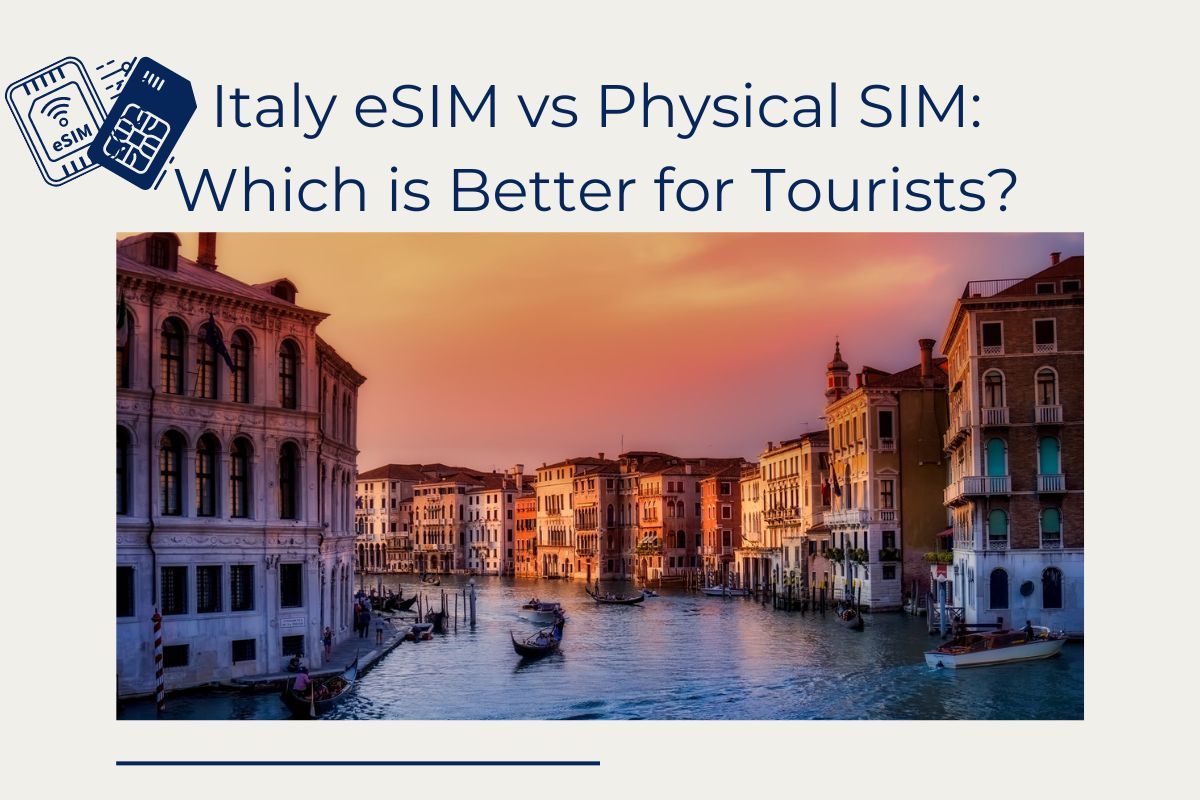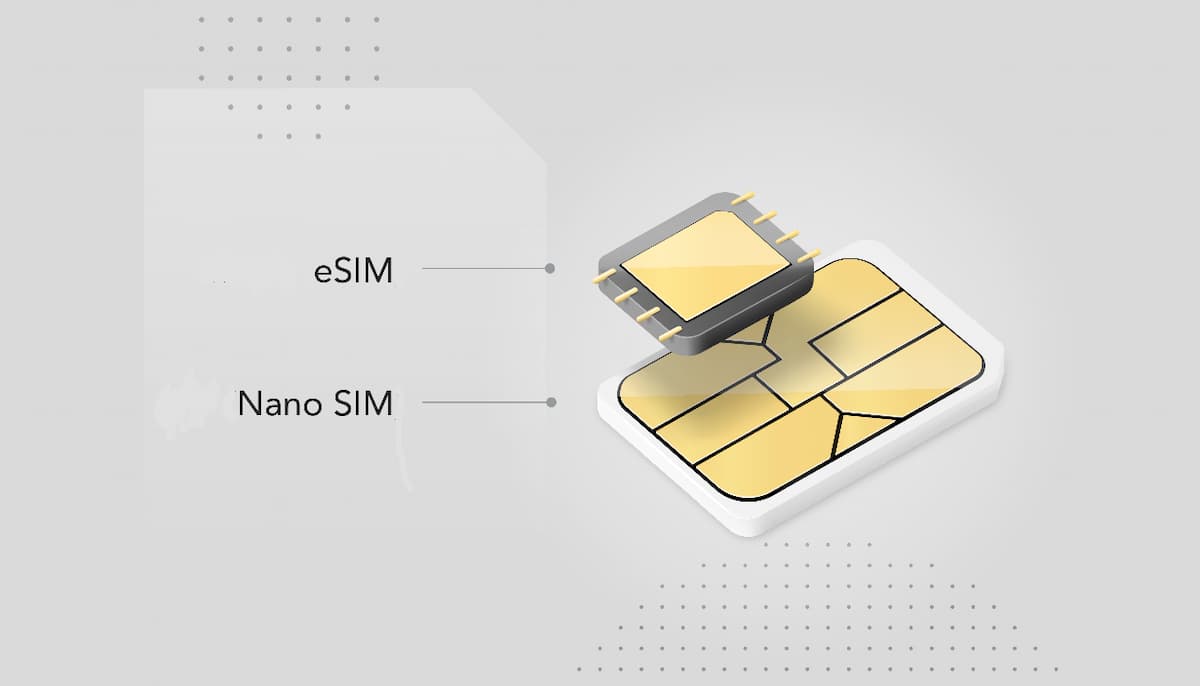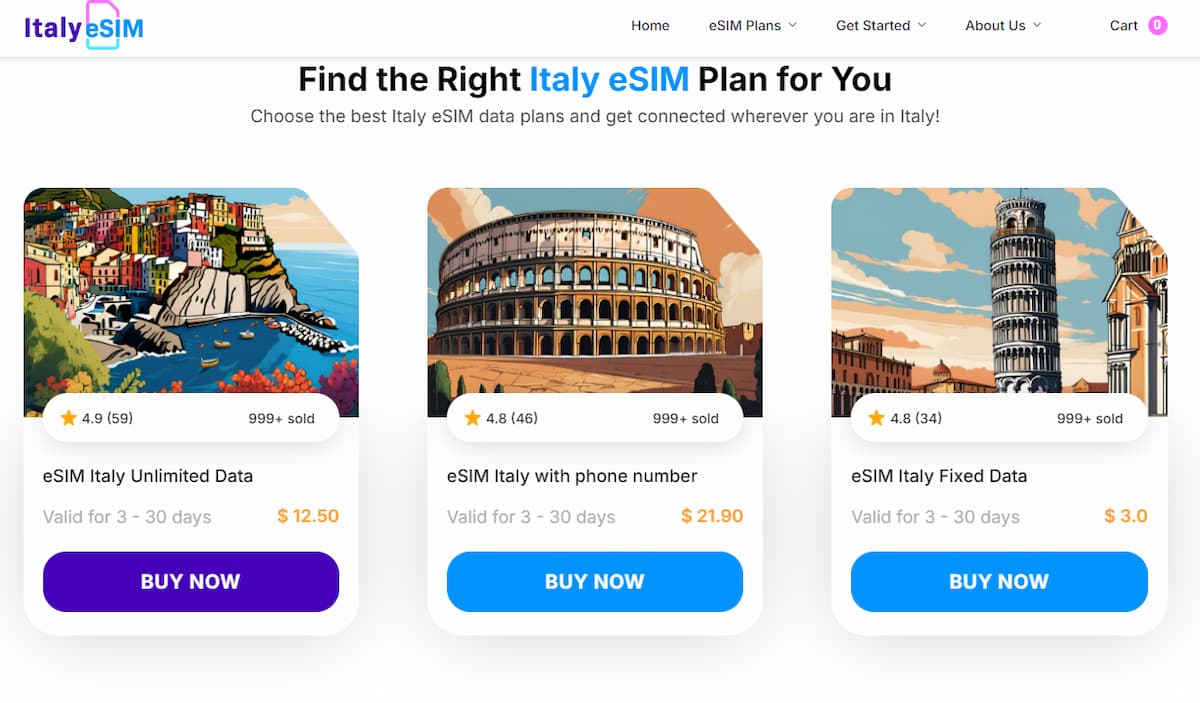Italy eSIM vs Physical SIM: Which is Better for Tourists?
If you’re planning a trip to Italy, staying connected is essential for navigating the streets, booking reservations, and sharing your journey on social media. But should you use an Italian eSIM or a physical SIM to stay connected? Both have their benefits, but the right choice depends on your needs, the length of your stay, and how tech-savvy you are.
In this blog, we’ll explore the differences between an Italy eSIM and a physical SIM card, helping you decide which is best for your trip.

Table of Contents
Is eSIM Available in Italy?
Yes, eSIM technology is widely available in Italy, making it a convenient option for tourists. The eSIM (embedded SIM) is a digital SIM card that allows you to activate a mobile plan without inserting a physical SIM into your phone.
Many mobile carriers in Italy, including TIM, Vodafone, and WindTre, offer eSIM services, allowing travelers to stay connected without purchasing a physical SIM card.

With the growing popularity of eSIM, it’s now easier for travelers to activate their plans online before arriving in Italy. Many international eSIM providers also offer data plans specifically designed for travelers in Italy. But how does an eSIM compare to the traditional physical SIM card?
Italy eSIM vs Physical SIM Comparison
When deciding between an eSIM and a physical SIM for your trip to Italy, it’s important to consider several factors, including convenience, price, flexibility, and data speed.
| eSIM | Physical SIM card | |
| Convenience | Can activate your data plan before arriving in Italy. Simply purchase an eSIM plan online, receive a QR code, and scan it using your phone’s eSIM feature. => No more searching for a SIM card vendor or struggling with language barriers. Don’t need to swap into a physical SIM card. | You’ll need to purchase a physical SIM after arriving in Italy, which might involve finding a local store, airport kiosk, or vendor that sells tourist-friendly SIM cards. You’ll have to physically remove your home SIM card and insert the Italian one, which can be inconvenient and increase the risk of losing your original SIM. |
| Price | The price of an eSIM plan may depend on the providers. However, the prices may still be slightly higher than buying a local SIM card. Because you purchase the eSIM online, you’re often aware of all costs upfront, unlike physical SIM purchases that may have hidden fees. | Physical SIM cards from local providers like Vodafone or TIM can sometimes be cheaper than international eSIM plans, especially for long stays. A basic tourist SIM with data often costs around €10–€20. By purchasing a local SIM in person, you may find special offers and discounts not available with eSIM providers. |
| Flexibility | Instant activation: eSIM can be activated almost instantly, allowing you to switch between networks seamlessly without needing to change physical cards. If you plan to visit multiple European countries, some eSIMs provide regional coverage, so you won’t need to buy a new SIM for each country. Multiple profiles: With eSIM, you can store multiple mobile plans on one device, making it easy to switch between carriers if needed. | Limited flexibility: Physical SIM cards require manual insertion and removal, meaning every time you change plans or providers, you’ll have to physically swap out your SIM. This could be less convenient for frequent travelers.Local restrictions: While some physical SIM cards offer Europe-wide roaming, many local SIMs may restrict data usage or charge extra fees when used outside of Italy |
In summary, Italian eSIMs or physical SIM cards have different pros and cons. However, using an eSIM to stay connected in Italy seems like a great option.
Where to Get Italy eSIM?
If you decide that eSIM is the best choice for your trip to Italy, there are multiple ways to get one:
Getting an Italy eSIM from International eSIM Providers
Several global eSIM providers cater to tourists traveling to Italy:
- Airalo
Offers affordable data-only eSIM plans for Italy. It’s a popular choice for short-term travelers.
- Holafly
Known for its unlimited data plans, Holafly provides an easy-to-use service, perfect for travelers who need constant connectivity.
- italy-esim.com
As the #1 eSIM provider in Italy, italy-esim.com offers multiple plans for any traveling goals that interest many tourists. Here is why:
- Variety & Flexibility: Choose among a wide array of data packages that are best suited for your goals.
- Multiple Network Coverage: They take care of the technical aspect by collaborating with three main Italy mobile providers – so that you get a fast and reliable connection during your trip smoothly and uninterrupted.
- Top-notch Customer Service: They offer 24/7 customer support so you can get assistance if needed.
- Affordable Prices: Their eSIMs are competitively priced, offering excellent value for money.
Find the best Italy eSIM for your trip below:

Getting an Italy eSIM from Local Italian Telecom Providers
Major Italian carriers like Vodafone, TIM, and WindTre offer eSIM services for tourists. You can purchase and activate these eSIMs through the carrier’s website or visit a local store for assistance. Their websites often have English versions, making it easy for tourists to buy and activate plans.
Final Thoughts
When comparing Italy eSIM to physical SIM cards, the choice ultimately depends on your personal preferences and travel needs. If you prioritize convenience, flexibility, and ease of use, an eSIM is the clear winner. You can activate it before arriving in Italy, and the ability to store multiple plans on one device is perfect for frequent travelers or those visiting multiple countries.
However, if you’re looking for the most cost-effective option and don’t mind the process of purchasing a SIM card locally, a physical SIM might offer more budget-friendly options, especially for longer stays.
Ultimately, both eSIM and physical SIM cards provide excellent coverage and reliable service in Italy. The best choice depends on how you prefer to manage your mobile connectivity while traveling.



